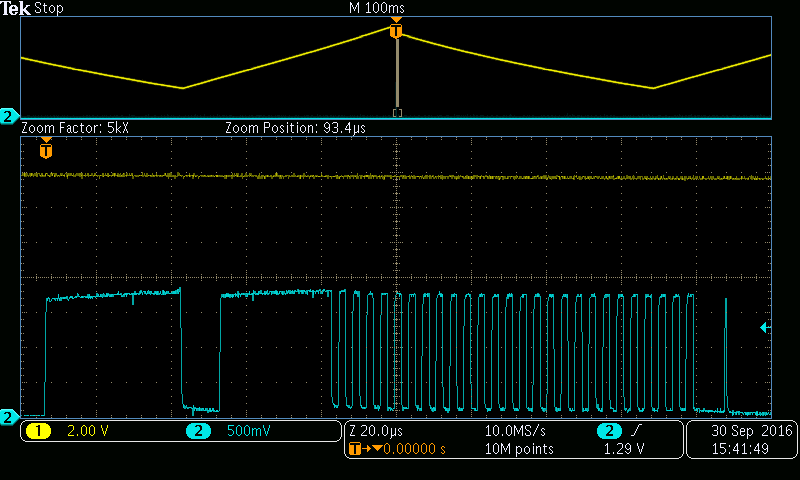Greetings,
I have rebuilt a power supply based on the UCC28631, creating several supplies based on working prototypes with modifications from this post. However, I am having trouble with startup again, after tweaking values for optimal performance. I read the fault-code pulse train at the SD pin as described in the previously mentioned post, copied below
I would recommend that you probe the SD pin (pin 2) of the UCC28631 after the latched fault has tripped (the region where VDD is regulated between ~ 8-10 V). Every time VDD hits the upper level ~ 10 V, the fault cause is detectable by a pulse train on the SD pin.
The fault-code pulse train starts with a ~30-us positive pulse (start-pulse - can used for scope trigger), then a train of ~1-us positive pulses, then a low interval of ~10 us to signify end of the pulse train. Count the number of 1-us pulses in between the start/end.
The possible faults in this case are as follows:
21 - VSENSE pin fault - short, or open detected, or Rth out of range
22 - DRV pin fault - short detected
23 - CS pin fault - short or open detected
However, code I read was 26, and there was an extra 30us pulse before the fault code train. Is there a full list of codes someplace, and is the extra 30us pulse start significant?
CH1: Vdd CH2: SD pin, past resistor
SD code read at node between 8.87k resistor [to SD pin] and 10k thermistor (to ground)
Thank you,


